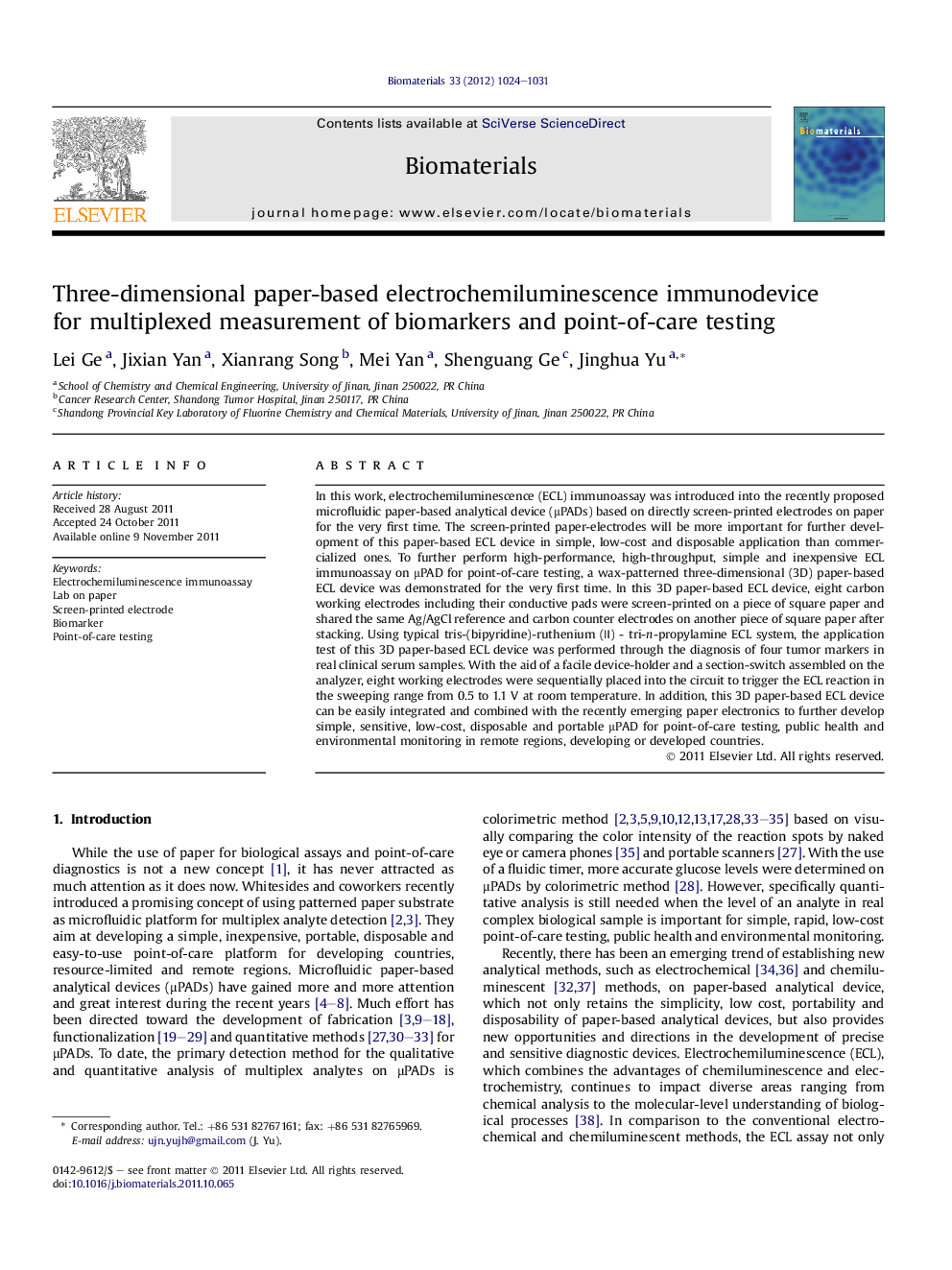| Article ID | Journal | Published Year | Pages | File Type |
|---|---|---|---|---|
| 10229415 | Biomaterials | 2012 | 8 Pages |
Abstract
In this work, electrochemiluminescence (ECL) immunoassay was introduced into the recently proposed microfluidic paper-based analytical device (μPADs) based on directly screen-printed electrodes on paper for the very first time. The screen-printed paper-electrodes will be more important for further development of this paper-based ECL device in simple, low-cost and disposable application than commercialized ones. To further perform high-performance, high-throughput, simple and inexpensive ECL immunoassay on μPAD for point-of-care testing, a wax-patterned three-dimensional (3D) paper-based ECL device was demonstrated for the very first time. In this 3D paper-based ECL device, eight carbon working electrodes including their conductive pads were screen-printed on a piece of square paper and shared the same Ag/AgCl reference and carbon counter electrodes on another piece of square paper after stacking. Using typical tris-(bipyridine)-ruthenium (â
¡) - tri-n-propylamine ECL system, the application test of this 3D paper-based ECL device was performed through the diagnosis of four tumor markers in real clinical serum samples. With the aid of a facile device-holder and a section-switch assembled on the analyzer, eight working electrodes were sequentially placed into the circuit to trigger the ECL reaction in the sweeping range from 0.5 to 1.1 V at room temperature. In addition, this 3D paper-based ECL device can be easily integrated and combined with the recently emerging paper electronics to further develop simple, sensitive, low-cost, disposable and portable μPAD for point-of-care testing, public health and environmental monitoring in remote regions, developing or developed countries.
Keywords
Related Topics
Physical Sciences and Engineering
Chemical Engineering
Bioengineering
Authors
Lei Ge, Jixian Yan, Xianrang Song, Mei Yan, Shenguang Ge, Jinghua Yu,
